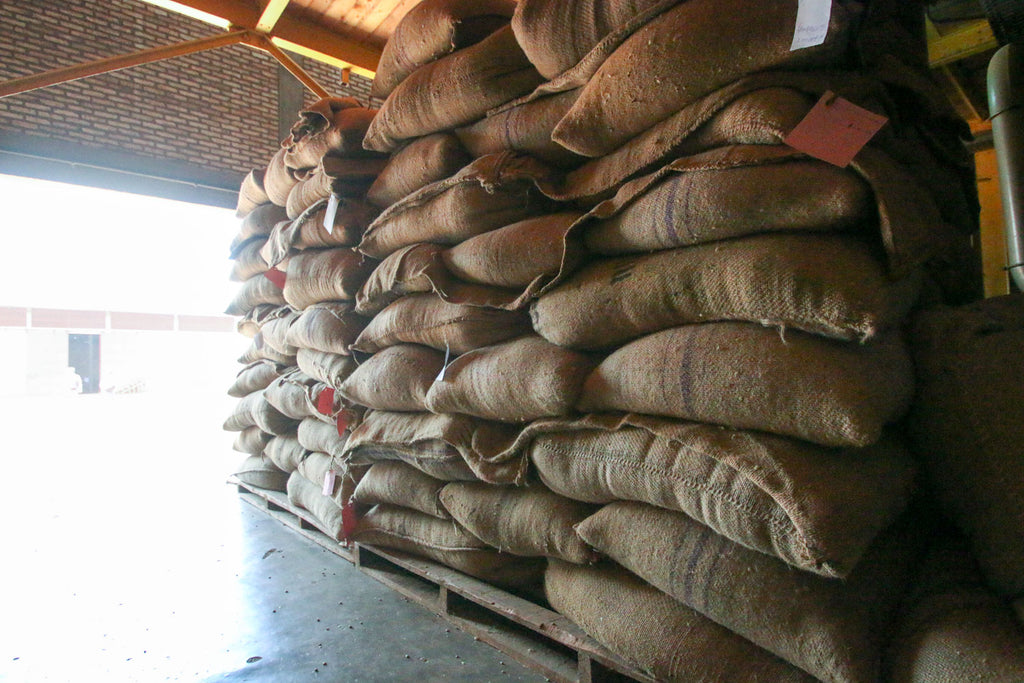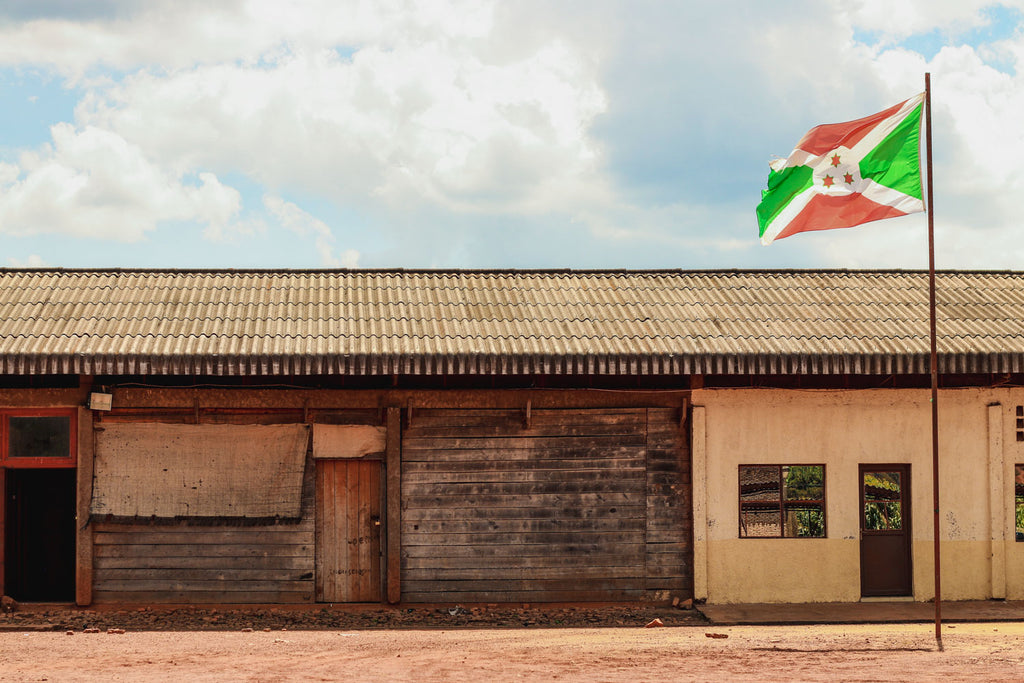There are plenty of phrases and words that have become synonymous with speciality coffee. One of those is ‘Microlots’. A lot of the time, you will see coffee roasters (including us!) selling some of their coffee and referring to it as a Microlot; most of the time giving it more attention compared to another coffee that is not a Microlot. You will also often see that there is also a number in the description ‘Lot-93’ for example but sometimes you may see a farm name.
So, what is it and why do we – roasters – give it more significance?
WHAT IS IT?
A simple explanation to describe a Microlot doesn’t really exist as there are – as usual when it comes to coffee – a number of variables. However, saying that, most would give it a general description of it being – as the word suggests – a small amount of coffee selected and exported (often also referred to as an exclusive lot).
Well I can, with confidence say, that a Microlot is NOT just a small lot of coffee. Unfortunately, as mentioned above, it can mean plenty of different things to different sections of the supply chain.
What do I mean by that?

MICROLOT FOR A FARMER
If you take for example a single small holder farmer; he/she may have allocated a small plot of land within their farm and is able within it to produce exceptional coffee paying extra attention to it. This coffee will also be harvested, processed, and exported as a separate lot from the rest. The farmer can then call this coffee a Microlot and the green coffee buyer – if they like the coffee after cupping and score it high – will purchase this coffee as a Microlot.
MICROLOT FOR A BUYER
For the buyer – aka coffee hunters - on the other hand, the term Microlot doesn’t always mean the same as it did to the farmer. So, for a buyer, a Microlot can mean exceptional coffee in terms of quality but it can also have significance in traceability. For coffee hunters, to be able to trace the coffee back to a single plot within a farm is hugely important. This is mainly because roasters and consumers are continually looking for sustainability, traceability, ethical trading as well as quality. So, traceability is usually where the number of the lot comes in and/or a specific small farm.
MICROLOT FOR A ROASTER
The description of what a Microlot is can also vary from a roasters point of view too. So, roasters can take on the descriptions given above or a complete combination of those which is perfectly fine if you ask me, because to me, they are true. However, unfortunately there are plenty of roasters that use the term to describe a larger lot of coffee they have purchased and split it into smaller lots. I think Janice Kanniah from Perfect Daily Grind describes this perfectly:
“For some roasters, a micro lot could be defined according to how much coffee they’re capable of roasting in a single day or a select lot of coffee roasted in a single session, which could vary depending on the size of their operations. This often takes place when a roaster is trying to increase their profit margins – such as when they purchase a large lot of coffee, subdivide it into smaller lots, and remarket it as distinct lots.”
For me, this should NOT be a description of Microlot, and roasters need to distinguish this.
A RISK TO THE FARMER? YES.
CAN THE RISK BE MINIMISED? YES
A lot of the time, small holder and subsistence farmers are the ones that can truly struggle and as coffee is a commodity the selling of it becomes more difficult; never mind how hard it is to actually produce it. So, for a good deal of farmers the risk of creating a really special, exclusive, and super tasty coffee within their farm can give them the opportunity to get a much higher price from the buyers as a Microlot coffee and this is essentially why they do it.
However, the whole economics of coffee and how commodity vs specialty coffee is priced, is quite complicated. I won’t even attempt to go into that right now, but I will say that yes Microlot coffees do receive a higher price for the farmer. Of course, there are many variables that eventually will play a huge part in the farmer’s profit margins. One example is that it would all depend on what percentage of their crop is being sold as a Microlot and what percentage will not, because the rest of the crop would obviously be sold at a lower price.
Now, why are microlots a risk? Because a lot of the time, these farmers, have just one window of opportunity to get their coffees cupped and selected and scored as being Microlots. A cupping (tasting) table at origin will have quite a few coffees on, so the competition for a farmer is huge and even though their coffee may be selected, it may not be the whole or a large percentage of their crop.
This is where, again, cooperatives and associations formed can help. Apart from all the other benefits these have to small holder farmers, they can play a significant role in pricing, finding the right buyers and also pushing the Microlots.
SO, SHOULD WE BE SUPPORTING MICROLOTS
When I say ‘we’ I mean you too because you are the end user of a long coffee supply chain and therefore you should also have a say. This is why I write about the coffees, coffee farms, cooperatives, and communities we support and why. I won’t digress any further though.
I do believe in part that the term Microlot has become a bit of a marketing tool for many roasters and we can’t really exempt ourselves from that group (after all we do want to sell coffee!) Despite that though, we KNOW that this coffee is top quality by the simple and only fact that it comes to us ‘labelled’ as Microlot by the green coffee merchants we use. Our long-standing relationship with the green coffee importers we use for us is a guarantee that the coffee is apart from top quality, it has also been ethically sourced, produced, grown and is traceable.
So why shouldn’t we and other roasters not shout out about it and why shouldn’t you purchase it? It means that apart from supporting farmers who are willing to take the risk to produce Microlot coffee, you are also going to brew a hell of a coffee; beans that have been lovingly and painstakingly, ethically and sustainably grown.
OUR MICROLOT COFFEES - BURUNDI and EL SALVADOR
BURUNDI - Butezi Washing Station Cooperative LOT 393
Burundi is a small country and as a coffee origin it produces microlots almost by default. Farmers own an average of less than a single acre. They use centralised washing stations and the coffees are named after the washing station – this is also where the lot numbers are given.
The Butezi Washing Station is located in the town of Gahombo, in the Kayanza Province of Burundi. More than 2,000 producers deliver cherry for processing here, either directly to the station or to a receiving point about 1.5 kilometers away in Rukago. Farmers here own less than half a hectare of land, on average, and in addition to growing coffee, they also grow crops like bananas, beans, yams, and cassava, both for sale and for household use.
Unlike other coffee-growing regions in Central and South America where landholdings are slightly larger and coffee-centric resources are more available, most producers in Burundi do not have space on their property or the financial means to do their wet- or dry-milling. Instead, the majority of growers deliver cherry to a facility that does sorting, blending, and post harvest processing of day lots to create different offerings.
It’s very fruity with caramel, apple, grape, chocolate, and some floral notes, soft and sweet with tart acidity and heavy creamy mouthfeel.
EL SALVADOR - Finca San Andres, Nueva Esperanza farm
Known as the ‘land of volcanoes’, El Salvador is the smallest Central American country. El Salvador has been able to capitalize on its reputation for varieties of Old stock Typica & Bourbon, the local dwarf-Bourbon mutation Pacas, as well as the Salvadoran-created hybrid Pacamara (a mix of Pacas and Maragogype, a large-bean-size coffee plant) allowing growers to differentiate by marketing individual varieties of coffee.
This coffee is a Microlot, from the Nueva Esperanza farm and it's a honey processed coffee. Mr. Jose Fransisco Recinos grows both Pacas and Pacamara in his 2-manzana farm. After picking the coffee, it is de-pulped. The coffee is then placed in sacks to ferment for 14-18 days before the drying process whereby it is laid out on raised beds for 15-20 days.
This one is a balanced, sweet coffee with a heavy tart acidity. Citrus fruit, toffee and grape flavour.
CHECK OUT OUR LATEST ADDITION TO THE MICROLOT RANGE FROM NICARAGUA, FINCA BETHANIA ALONG WITH OUR NEW BLOG POST




